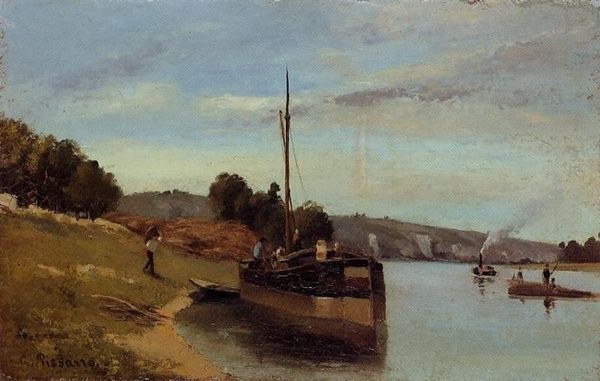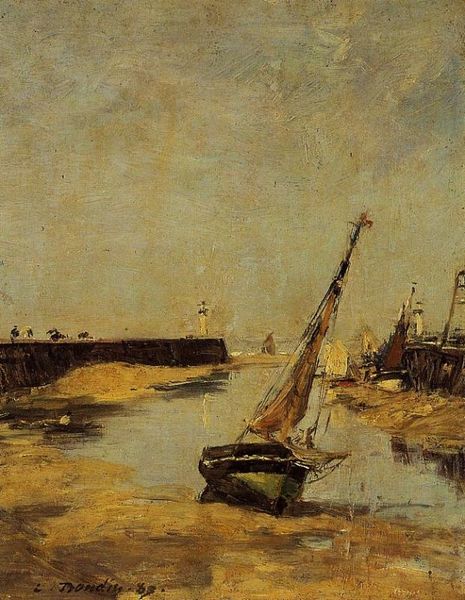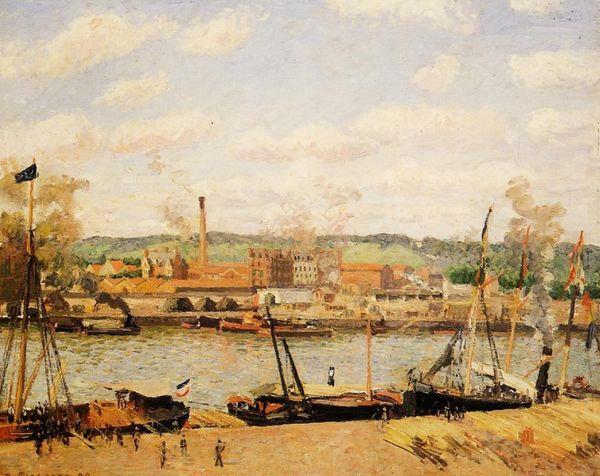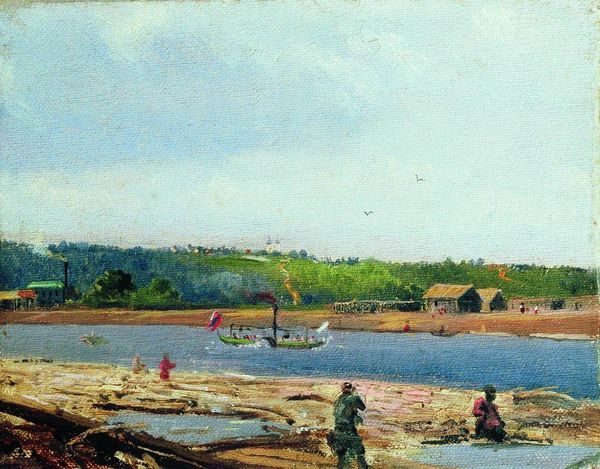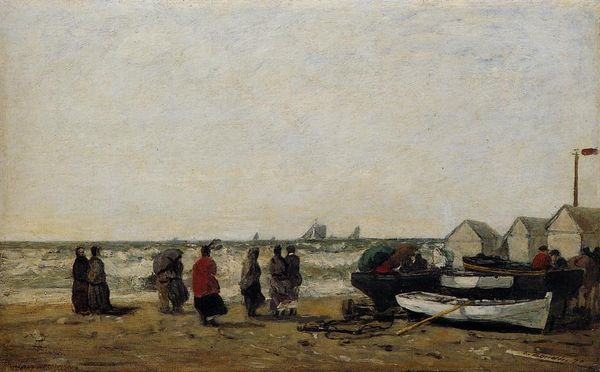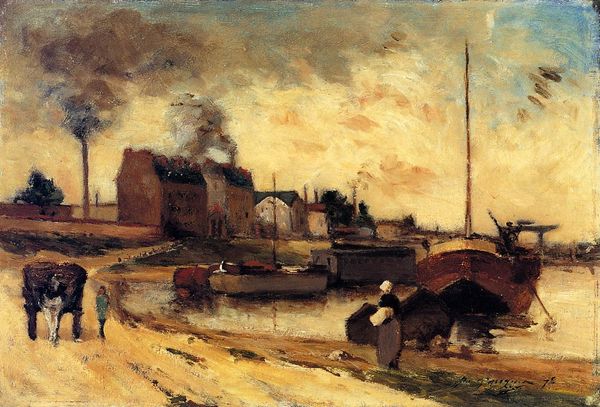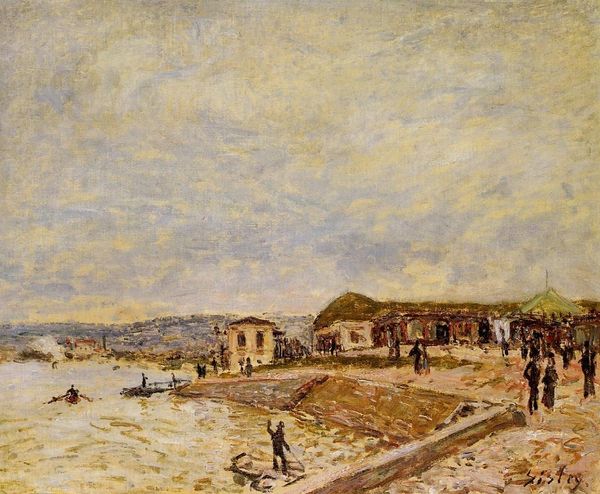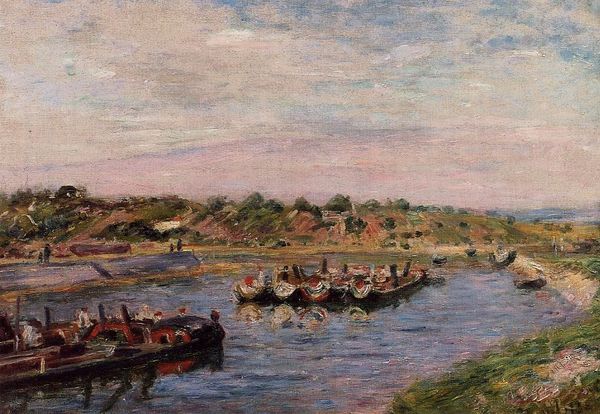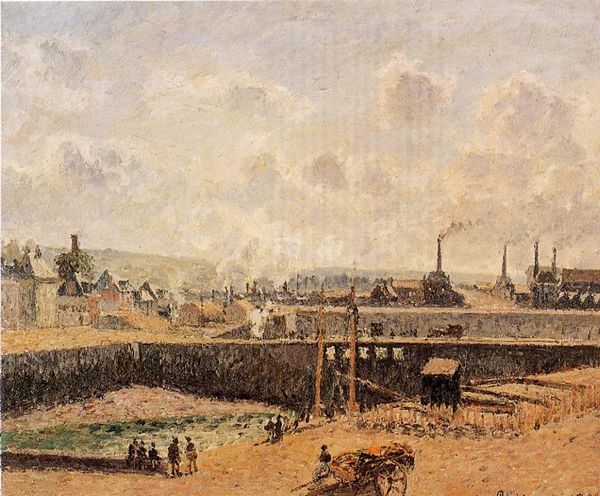
painting, plein-air, oil-paint
#
portrait
#
painting
#
impressionism
#
plein-air
#
oil-paint
#
landscape
#
river
#
impressionist landscape
#
oil painting
#
men
#
water
#
cityscape
Copyright: Public domain
Curator: At first glance, Paul Gauguin's "The Seine Opposite the Wharf de Passy" evokes a quiet sense of urban life meeting nature. Painted in 1875, this oil on canvas depicts a serene yet bustling scene along the Seine. What are your initial impressions? Editor: I am struck by how the architectural presence of the tower dominates, particularly given the landscape genre. I think that element really contextualizes what could be a simple landscape, situating it within questions of development, of modernity's reach even. It's not *just* a river; it's a river being actively shaped. Curator: Absolutely. The presence of the wharf is essential. Considering the social and industrial landscape of Paris at the time, what we're viewing here isn’t just the scenery, but also a hub of commerce, a meeting point. The working class interacts with nature alongside the slowly modernizing infrastructure, influencing their identities in this transitional place. Editor: Precisely. These figures along the shoreline hint at social dynamics – class, labor – which were, even in these early Impressionist pieces, a part of modern life's narrative. The river connects and divides simultaneously, both as a pathway for trade and potentially, as a geographical boundary for the affluent versus the working class, reflecting inequalities. Curator: Note how the sky, the water, and even the architectural elements blend, which are really trademark features of the Impressionist approach to landscape. What seems most interesting is how even then, Impressionism subtly started a dialogue around labor. Even something like, "who benefits from the modernization being created by the wharfs?" Editor: That focus aligns perfectly with broader Impressionist anxieties regarding industrialization, but is specifically centered around the people who occupy this space along the riverbank. It's easy to see this piece as simply a representation of beauty, but it becomes even more intriguing to me to interpret this artwork, made around 1875, as a documentation of a changing urban society. Curator: Thinking about it, the painting encapsulates Paris at a really crucial period. I will never see it in the same way again. Editor: Agreed. There's a great power in re-examining familiar images with new, critical eyes.
Comments
No comments
Be the first to comment and join the conversation on the ultimate creative platform.

